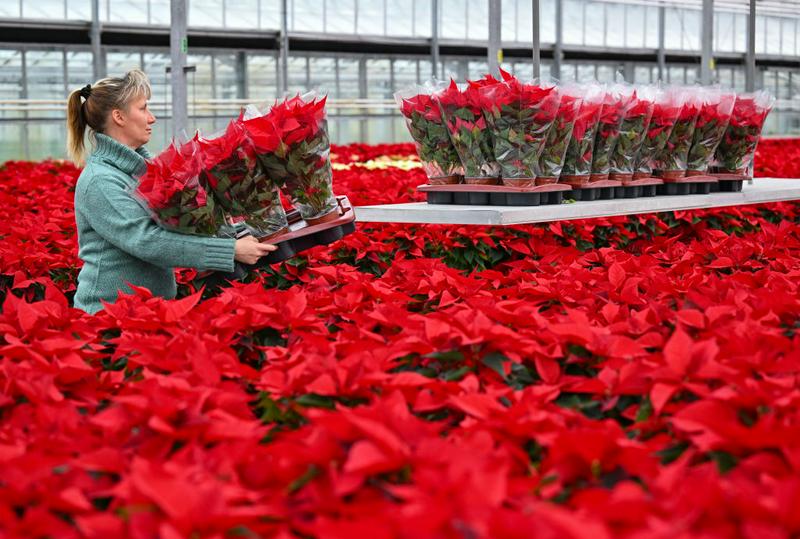Cuetlaxochitl Versus Poinsettia: The Cultural Appropriation Of The Beloved Christmas Flower
By | December 2, 2022

As the holiday season approaches, many celebrate by putting up a Christmas tree, hanging an evergreen wreath on their door, and buying some poinsettias, but some—okay, pretty much all—of those things had a long and weird journey to their status as Christmas decorations. The poinsettia, for example, was once a sacred part of Aztec culture until Catholic colonists showed up and colonized up the place.
The Cuetlaxochitl
The cuetlaxochitl, pronounced "ket-la-sho-she," is a plant native to Central America and southern Mexico whose name means "flower that withers, mortal flower that perishes like all that is pure." Pretty badass, right? The Aztec people certainly thought so. They believed it was a sacred gift from the gods, in part because its flowers seemed to bloom bright red in mid-winter, when all other plants died. (Technically, this is because they're not flowers at all but a special kind of leaf called bracts, but the gods could have something to do with it, too.) Although the Aztecs cultivated cuetlaxochitl for their own use, boiling the leaves for purple dye and ceremonial face paint and treating headaches with its milky sap, everyone understood that if they happened upon a cuetlaxochitl plant in the wild, they were to admire it, thank the gods for it, and leave it untouched.

In Come The Catholics
In the 16th century, Catholic missionaries from Spain arrived in Mexico, determined to conquer the land, set up colonies, and convert its "heathen savages" to Christianity. They weren't above using a sacred Aztec plant as "proof" that God wanted the Mexican people to convert, telling them stories about the cuetlaxochitl's imaginary place in Christian mythology. In one such story, the cuetlaxochitl plants used by a group of Franciscan friars in the Taxco area of Mexico to decorate a nativity scene for Christmas mass simultaneously bloomed immediately following the rosary and litany. In another, a poor little girl named Pepita was walking to her village church for the Christmas Eve service when it suddenly dawned on her that she had no offering to bring. In a panic, she picked a small bouquet of plants she found growing along her path and placed it at the base of the altar, where it suddenly blossomed into scarlet flowers.

Joel Roberts Poinsett
Today, we know the cuetlaxochitl as the poinsettia because of Joel Roberts Poinsett, who served as the United States's ambassador to Mexico in the 1830s. Poinsett was an outspoken supporter of slavery and a slaveowner himself as well as a good friend of Andrew Jackson and supporter of his Indian Removal Plan who had previously run afoul of the Chilean and Argentinian governments for trying to weasel in on their resources. Basically, not a beacon of international diplomacy. One of his tasks was to ensure the stability of the newly formed Mexican government, though he spent most of his time trying to negotiate territory for the States, but before it got him kicked out of the country, he snagged a cuetlaxochitl plant to bring home.
From this illicit flora, Poinsett bred more cuetlaxochitl plants in his greenhouse in South Carolina and gave them out as holiday gifts to his well-connected friends. Soon, everyone wanted the beautiful plant that turned bright red just in time for Christmas, but they couldn't pronounce its name, so they renamed it after its bearer. Recently, activists have advocated for reverting to the plant's original name, so once again: It's "ket-la-sho-she." Might as well start practicing.

